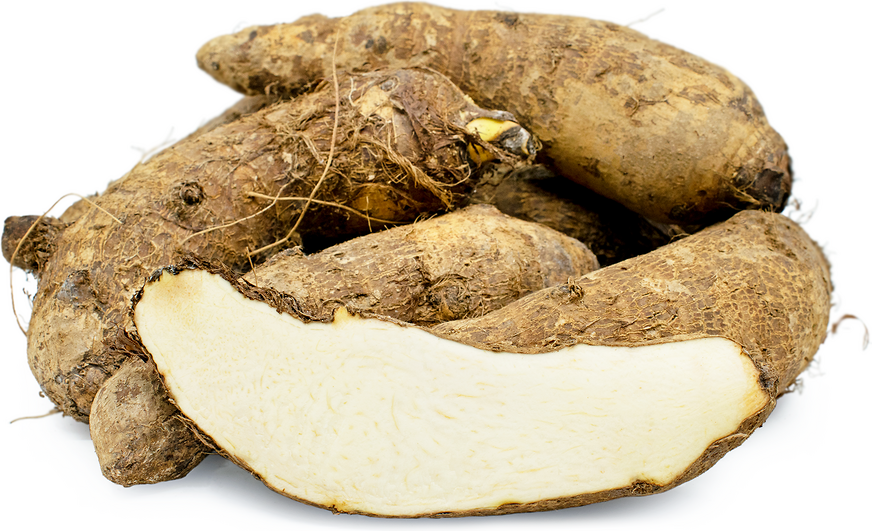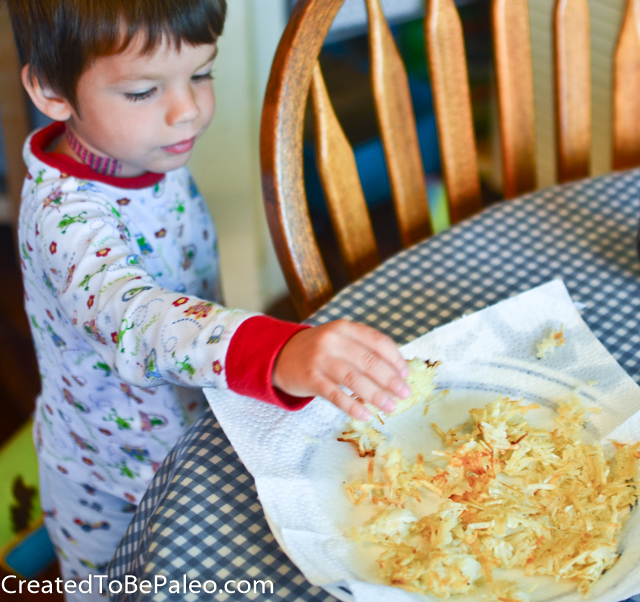
A typical Paleo pantry looks a little different than it would for someone who follows a Standard American Diet. In our family’s case, I make sure we are always well stocked in malanga. I discovered this amazing root vegetable quite by accident several years ago- it was marked down at my favorite produce store- so I decided to take it home and give it a try, after I googled what it was, of course! It was quite a happy accident for our family, because it has become a regular addition to our table, appearing often at breakfast, lunch, or dinner, and in many delicious iterations. Look for it in the Hispanic produce section of your grocery store, or at an ethnic produce market. It is pretty easy to find in Florida, but I have been unable to find it in other parts of the country when we have traveled.
Malanga, also known as yautia, is a a root vegetable widely grown in the tropics and South America, as well as in southern Florida. The plant resembles a taro plant, or elephant ears, and the edible root is harvested. It is brown, elongated, and hairy, and not very pretty on the outside, but once peeled, a crisp flesh ranging from white, to yellow, to pink is revealed. A big bonus for our family is that it is probably the most hypoallergenic food on the planet, as well as being Autoimmune Protocol (AIP) friendly, and makes an amazing and inexpensive substitute for white potatoes. I can usually find it for under $1.00/lb, even in our premium grocery store.
Malanga can be stored in the pantry at room temperature for a few weeks, or for longer in the fridge. It must be peeled and cooked to be edible.
Some nutrition facts about malanga: It is fairly high in calories, about 135 calories per 1/2 Cup serving, mostly in the form of carbohydrates, so don’t go too crazy with the stuff! It is a good source of thiamine and riboflavin, and a modest source of vitamin C and iron. It can also be milled into a flour, which can supposedly be substituted fairly well for wheat flour. (I haven’t experimented with that yet, but have no fear, it is coming!)
As for preparation methods, my family enjoys malanga, particularly malanga blanca, in anyway you might traditionally use potatoes. We often boil it and mash it with some fat and broth to make mashed malanga, in lieu of mashed potatoes. And the leftovers are stiff enough to be patted into little hand cakes and fried in oil, for a crispy on the outside and creamy on the inside easy side dish. Sometimes we will pull out the deep fryer and thinly slice it with a mandoline to make chips. And my kids’ favorite preparation by far- Malanga Hash Browns! Simply peel and then grate the malanga root. (I usually do about 3 for our family) Place in a thin layer in a pan preheated with a generous amount of oil, and cook until both sides are golden brown and crispy. Remove to a paper towel to drain, and season with salt. A breakfast favorite, especially when served with some turkey bacon, sausage, or ham!
(Some of my information came from here. Some great recipes on this document as well!)





Leave a Reply